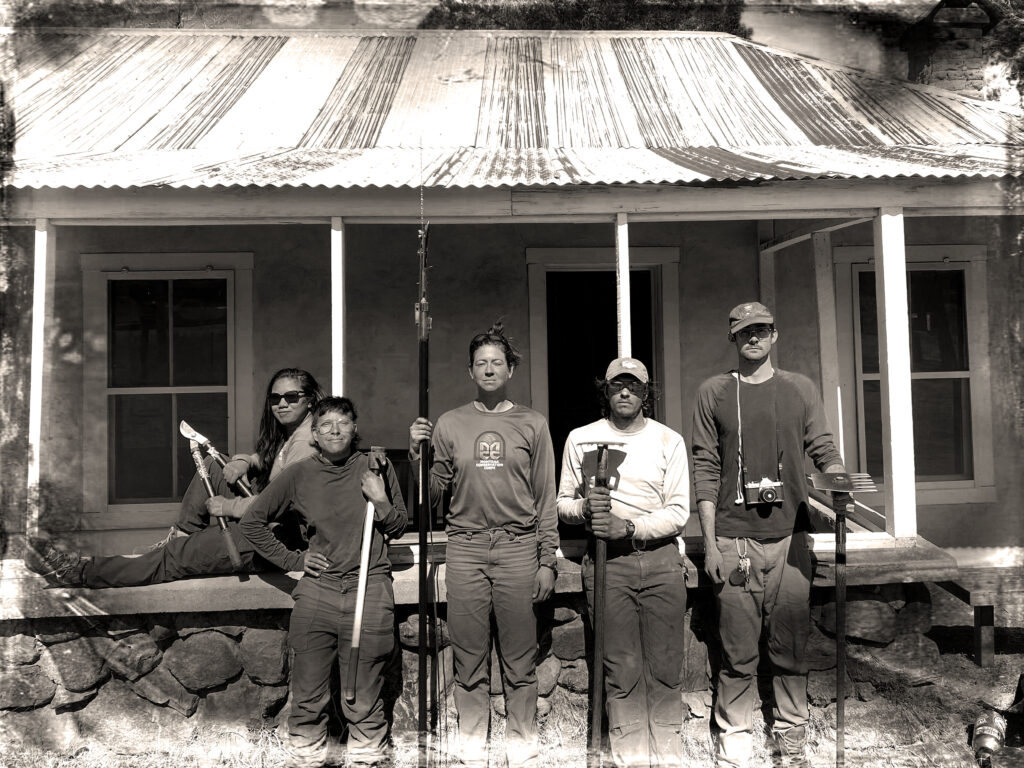
Written by Dexter Kopas, Wild Stew Field Crew Leader.
This week the crew fearlessly led by Dexter was tasked with working on Brown Canyon Trail, located in the Huachuca Mountains just south of Sierra Vista. This popular multi-use trail leads to attractions such as Brown Canyon Spring and Pomona Mine before eventually feeding into the Arizona Trail higher up in the mountains. Brown Canyon Trail follows a seasonal drainage which, combined with heavy use, has led to it being severely eroded in many sections. The main goal for the crew was to fix a couple of spots where the tread was most damaged, as described by the Forest Service’s Alex Gonzalez, who joined us the first two days.
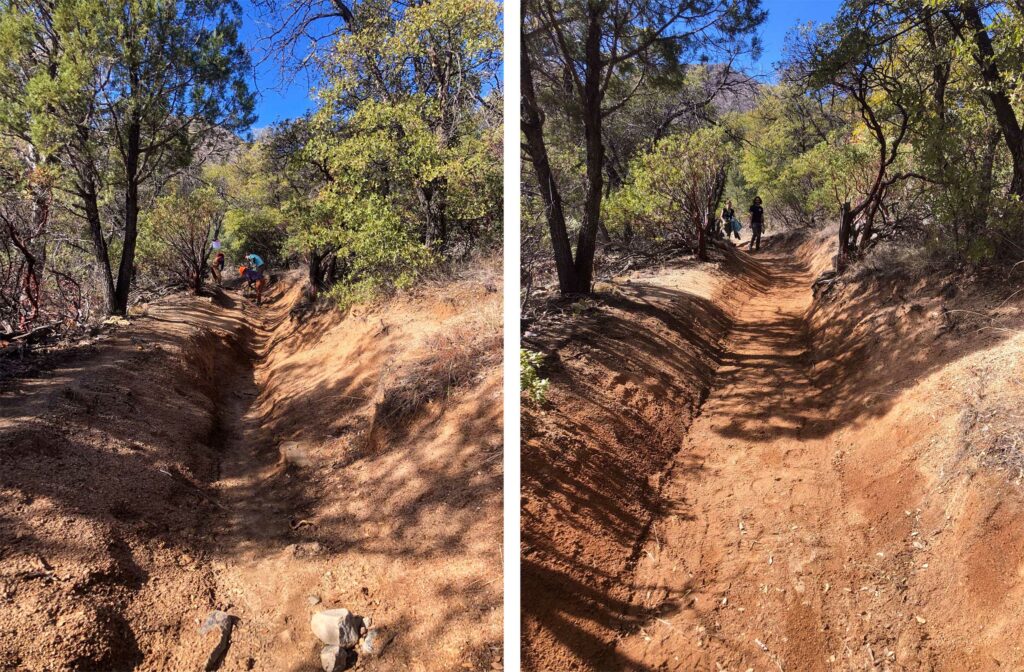
The first work area was a washed out spot in the middle of the tread that had left a large, unstable step down. Not only did that present a hazard to hikers and equestrians, but also caused water to flow more quickly through the deeply trenched sections directly down the trail. The crew decided to stabilize it with five large check steps designed to hold sediment, prevent further erosion, and create a more even grade. It was a long process that involved felling and limbing juniper trees, bucking them up into 6-10 foot long sections, removing the bark, and partially burying the logs in the ground. juniper is known to be a very durable wood and was readily available around the work site, often in dense woodlands where their removal would mean surrounding trees having a higher chance of surviving fire. Removing the bark prevents water from getting trapped inside and keeps the log from rotting more quickly. In order to ensure the logs were as level and stable as possible, the trenches were dug to the exact size and shape of the logs by frequently checking the fit. Mel and Chloe took the lead on this part of the project; despite the back-breaking work of digging around roots and lifting the log in and out of the hole, they shared many good laughs and a combined pride in the completion of the steps. To celebrate three days of hard work the crew members cartwheeled, rolled, somersaulted, and danced down the steps.
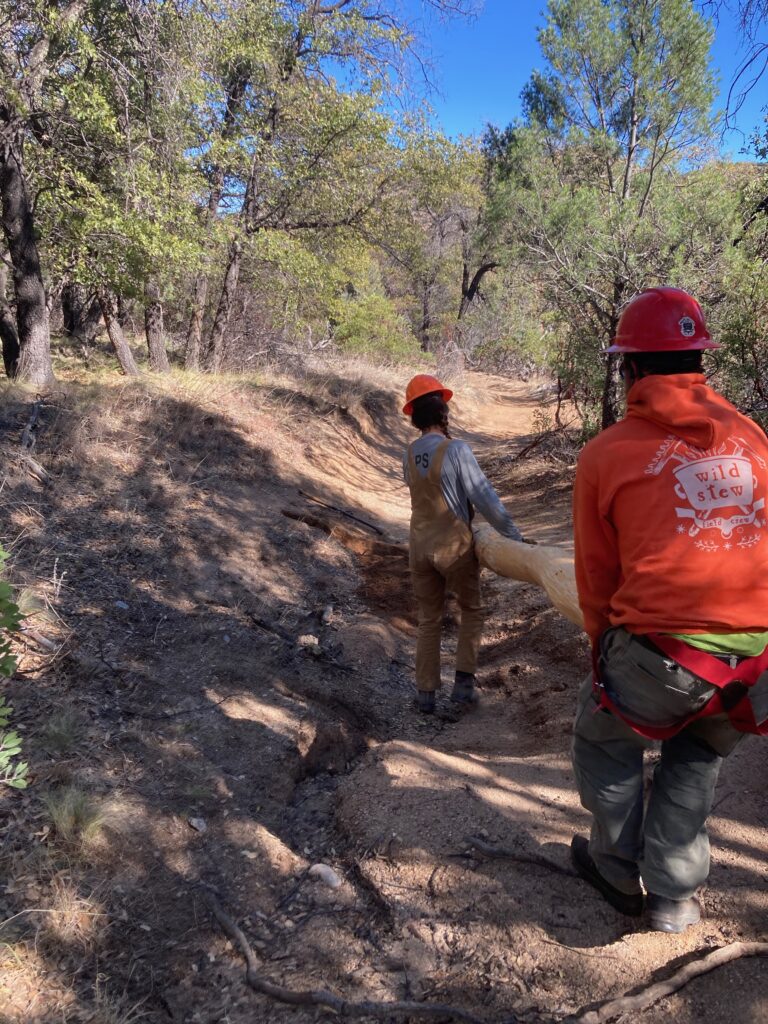
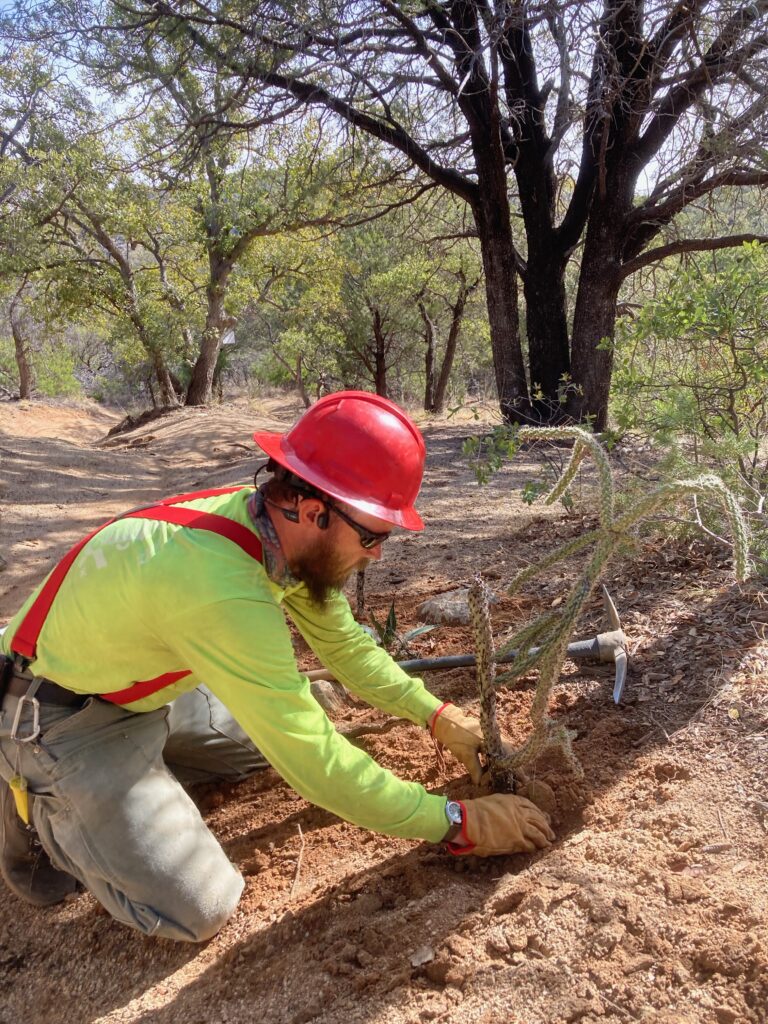
Not to be out done, Ollie and Dexter took on a wooden structure project of their own. Theirs was building a wooden stockade-style retaining wall. In this section, the trail split and the solution was to make one side drain properly and clearly defined as the trail while fully blocking off and rehabilitating the other side, which was being heavily eroded and if left unchecked would soon deepen into a trench. In order to dissuade mountain bikers from jumping the eroded side, the crew built a large, jagged, two-story wall with more harvested juniper logs. This involved more trench digging and log-stabilizing balanced with sweat and laughter. The crew was further supported by Bradley who sharpened nearly the entire tool cache and also brushed a large section of trail near the trailhead.
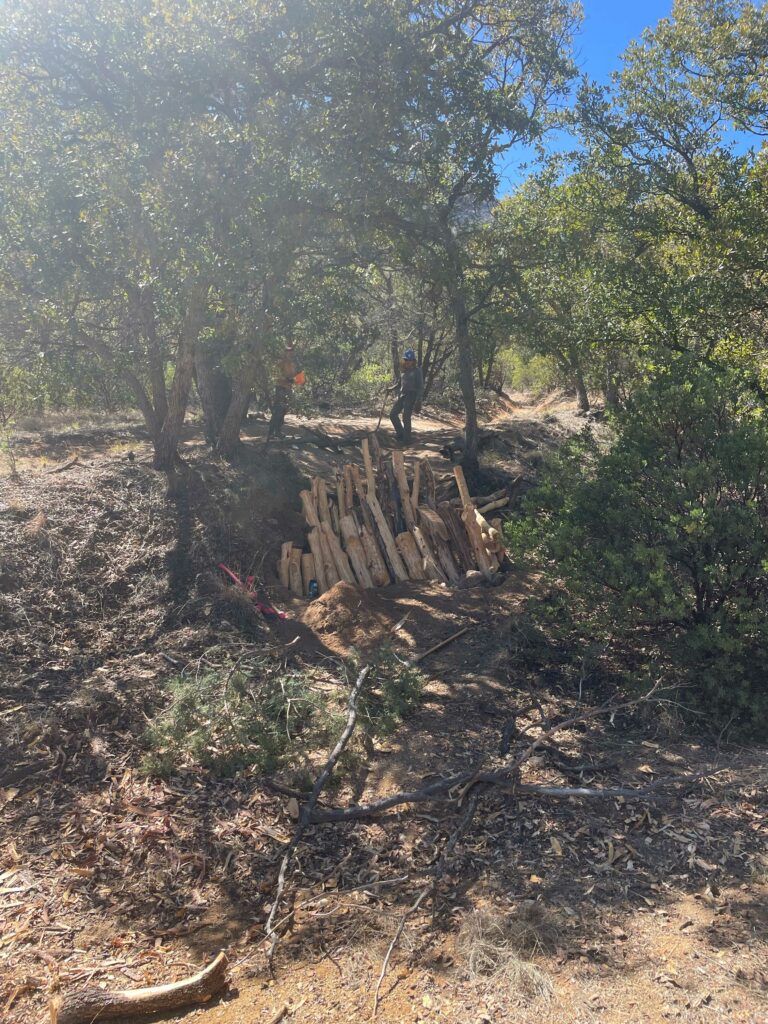
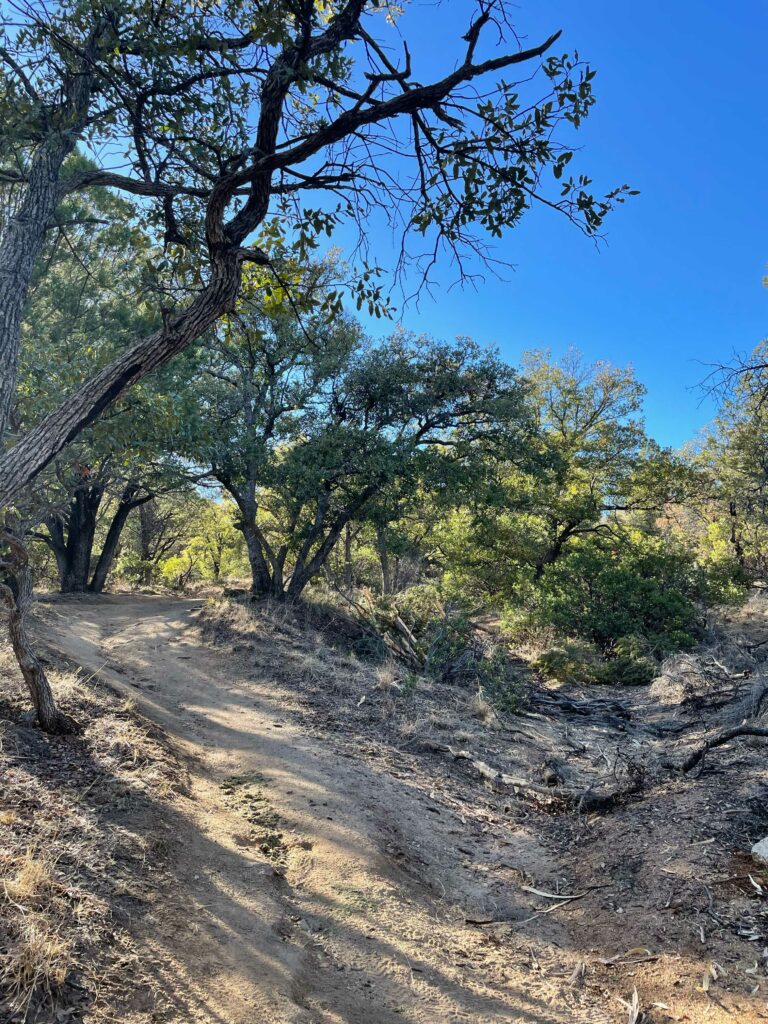
Around these two major structural projects, the crew constructed drains to take water off the trail, filled in or reinforced trenches to create a better walking surface and slow down surface water, and removed brush to create better sightlines to prevent collisions involving fast-moving trail users.
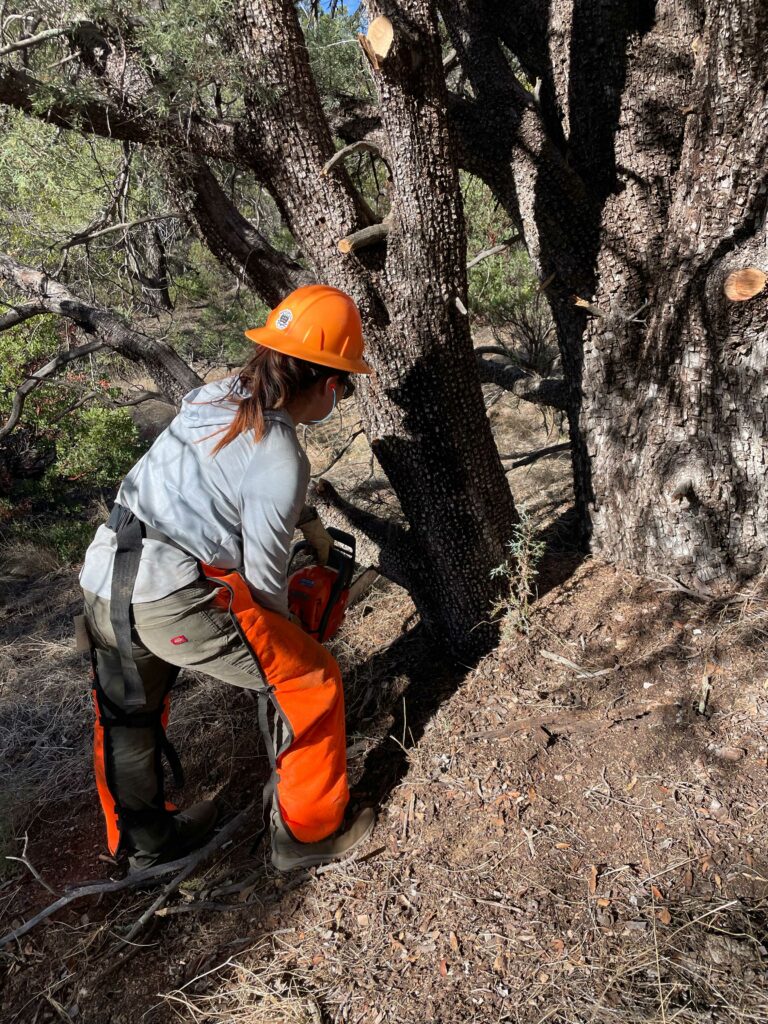
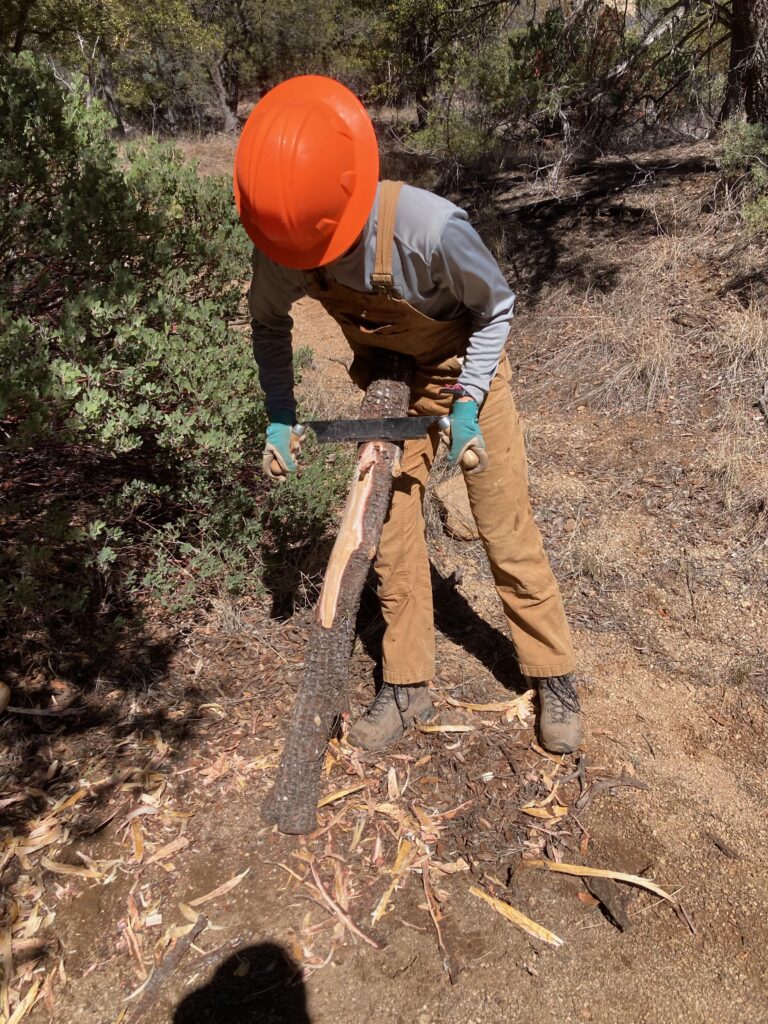
Throughout the week the crew enjoyed many interactions with thankful horseback riders, hikers, and mountain bike riders representing all the user groups of the trail. Although some bikers voiced their disappointment in seeing their favorite “fun spots” gone from the trail, crew morale was always restored by friendly trail dogs (Mars, Olive, Charlie, Duke, Zoe, Gem, Barley, and Pearl, to name a few) and the many kind, thankful human trail users. Other fan favorite moments involved gas station snack runs, sending messages down the trail to Bradley via friendly passersby, and cooking a joint effort meal of Jamaican red bean stew and crunchwrap s’mores. Two of our crew, Mel and Dexter, took advantage of the many excellent trails in the area with the mountain bikes they brought from home. Several evenings were spent testing out our work on the Brown Canyon Trail as well as enjoying the Lower Miller Canyon Trail, the Lower Hunter Canyon Trail, and the freshly-improved Perimeter Trail.
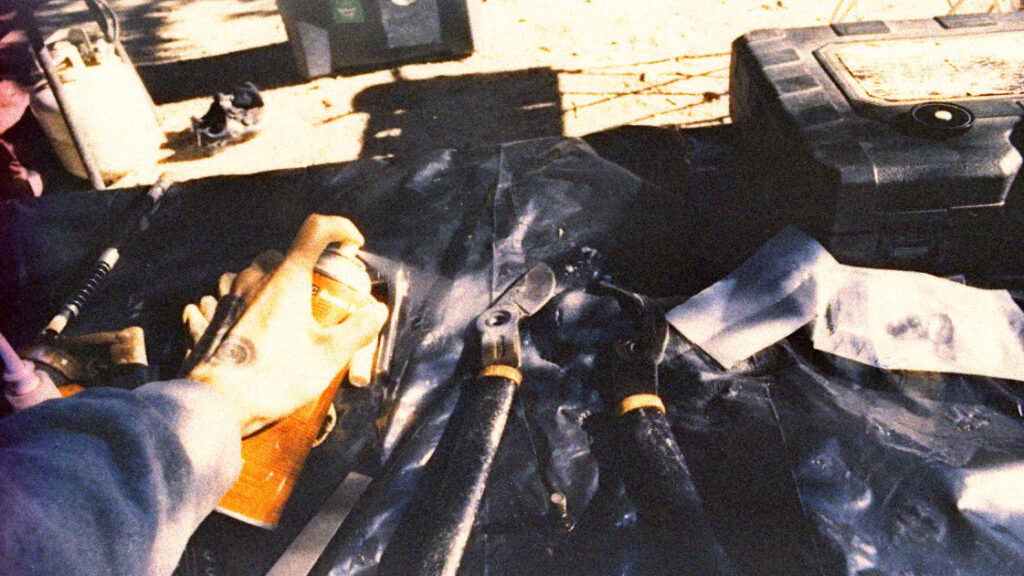
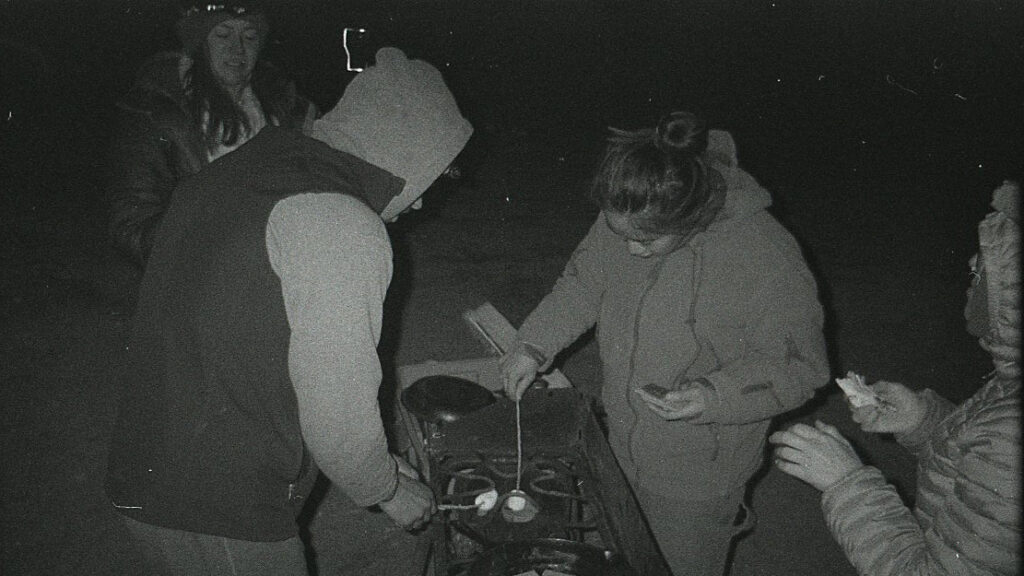
We were very thankful to have the support of the Sierra Vista Ranger District staff, who set us up wonderfully to get a lot of work done on this trail. It certainly makes our jobs easier to have good connections with such knowledgeable and caring local experts.








